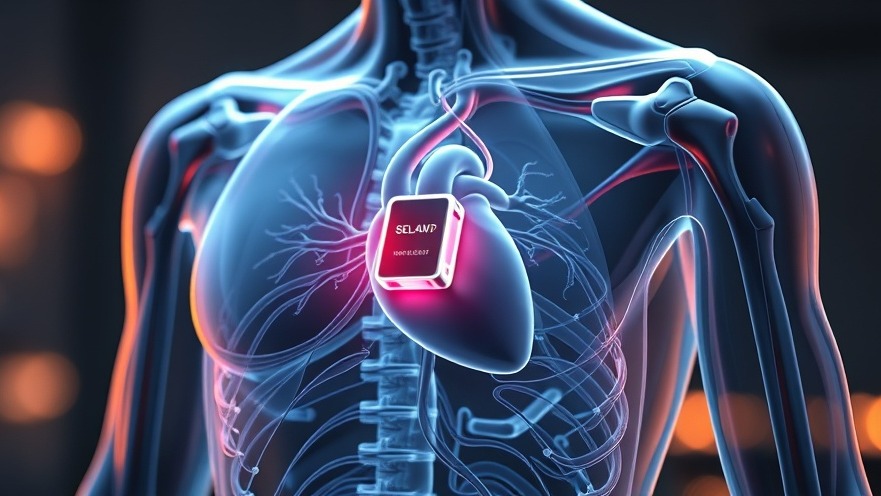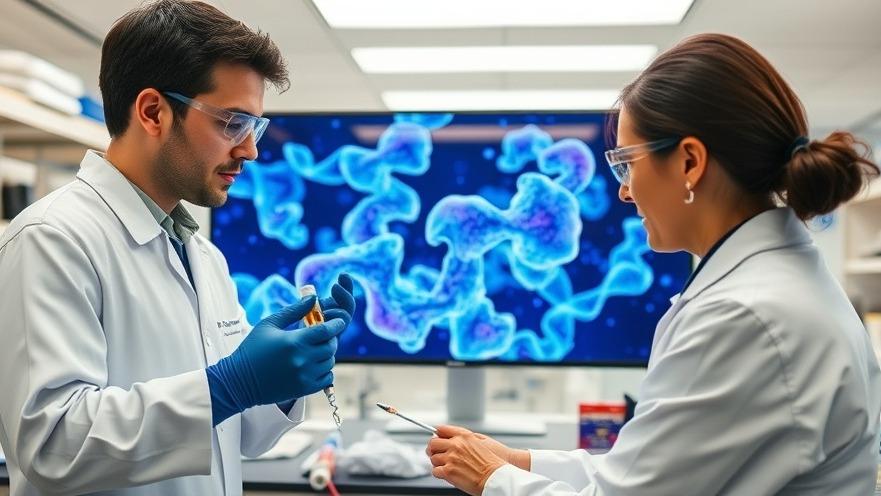
The Surge in Medical Device Battery Energy Density
The world of implantable medical devices is evolving rapidly, and a recent breakthrough promises to change the way these devices operate by enhancing their battery performance significantly. Researchers led by Eric McCalla from McGill University, in collaboration with the Canadian Light Source, have announced a remarkable 20% increase in the energy density of batteries used in critical medical devices like pacemakers and defibrillators. This improvement can lead to longer-lasting devices that improve patient safety and quality of life.
Understanding the Anatomy of Battery Anodes
At the heart of every lithium-ion battery is the anode, which plays a crucial role in the battery's ability to store and release energy. Traditionally, these anodes are made from graphite, which has limitations in energy density. In medical devices, anodes must operate at higher voltages to ensure safety. This poses a unique challenge: how to enhance energy capacity without compromising the well-being of patients.
Innovative Approaches: Introducing Neodymium
In a breakthrough study, McCalla's team introduced a small yet potent element: neodymium. By adding just a trace amount of this element to the anode, they discovered that it caused structural disruptions that significantly enhanced the flow of lithium ions. This not only increased the number of available sites for lithium to move in and out, thereby improving energy density, but also repositioned the existing elements in a beneficial way. This innovative application of neodymium opens new avenues for enhancing battery performance in medical devices.
The Mechanisms Behind Increased Battery Performance
But how does neodymium make such a significant difference? According to McCalla, the large neodymium ions disrupt the atomic structure over a broader area than expected, creating new pathways for lithium ions that were previously inaccessible. This principle was confirmed through advanced computer modeling techniques, which illustrated how lithium ions are more mobile near the introduced neodymium ions—essentially creating a “shortcut” for energy storage and release.
In Situ Experiments: A Key to Unlocking Insights
Conducting experiments in real-time at the Canadian Light Source's HXMA beamline was crucial for this research. The ability to observe the battery in action while running the experiments allowed the researchers to analyze the material properties and reactions dynamically, giving them a clearer picture of how neodymium affects performance. This method represents a significant advancement in battery research, showcasing the importance of integrating practical experimentation with computational techniques.
Implications for Healthcare Providers and Patients
For healthcare practitioners, understanding these advancements offers pivotal insights into the future of patient care. Batteries that last longer mean fewer replacements, reducing surgical risks and improving overall patient experiences. As these technologies develop, it is critical for concierge health practitioners and other healthcare providers to stay informed about innovations that can directly impact their patient populations.
Future Directions: What Lies Ahead?
The future of implantable medical device technology looks promising with continued innovations in battery efficiency. Practitioners should anticipate further enhancements in energy density, which could also translate into smaller, lighter devices that are easier on patients. Moreover, as research in battery technology progresses, the integration of AI and advanced materials could potentially automate and optimize battery management within devices, leading to unprecedented levels of reliability and performance.
Conclusion: An Energy Revolution in Medical Devices
This breakthrough in battery technology signifies a turning point in medical device engineering. With a substantial boost in battery energy density through innovative modifications, healthcare practitioners have more options to ensure patient safety and satisfaction. As medical technology progresses, staying abreast of these innovations will be key for those committed to enhancing patient outcomes in their practice. Collectively embracing these advancements could lead to healthier lives for countless individuals.
 Add Row
Add Row  Add
Add 






Write A Comment